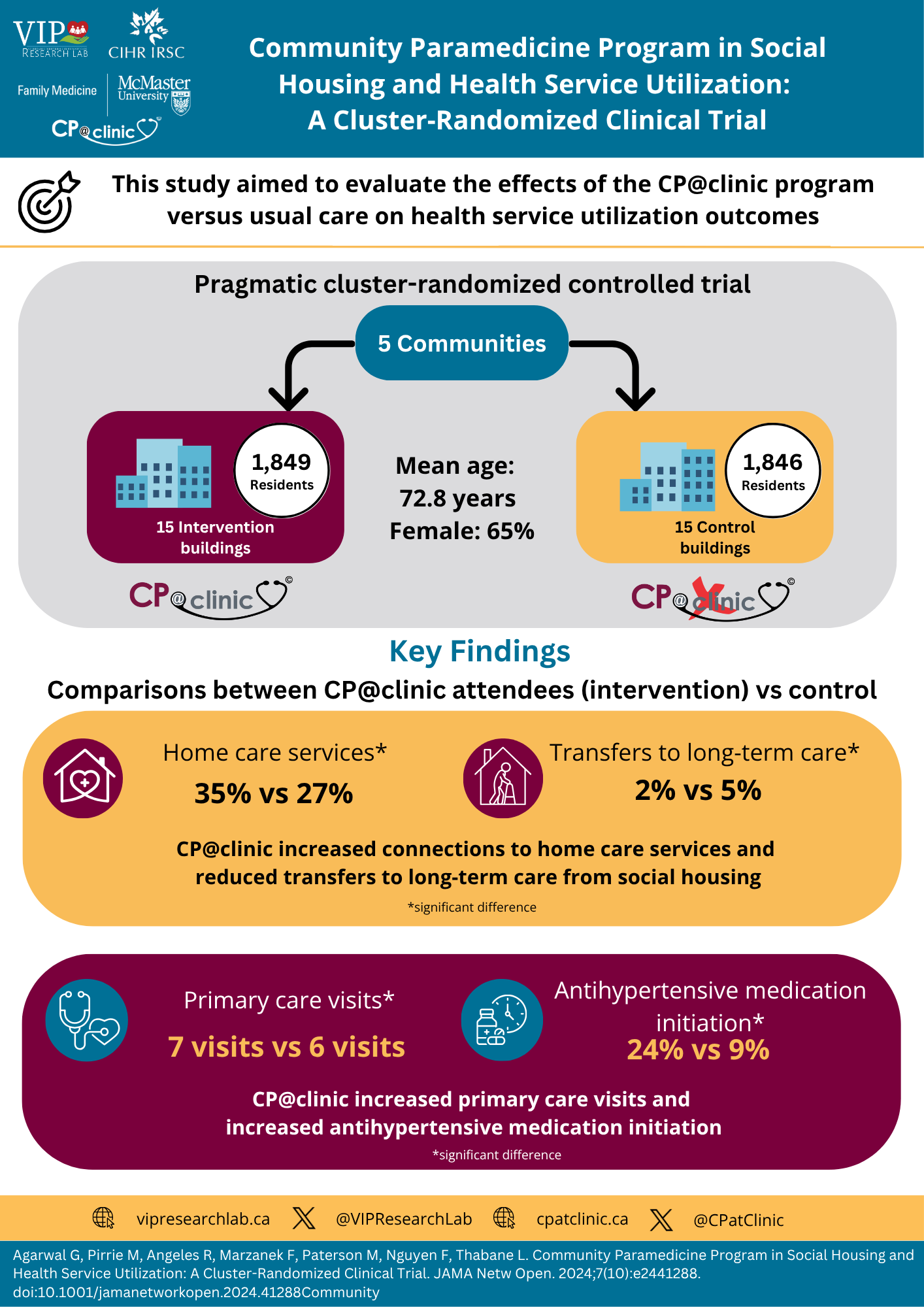
This infographic is titled “Community Paramedicine Program in Social Housing and Health Service Utilization: A Cluster-Randomized Clinical Trial”. On the left side of the title, the infographic is branded with the logos of the VIP Research Lab, the Canadian Institutes of Health Research (CIHR), the CP@clinic program, and the McMaster University Department of Family Medicine. The study aim is stated below the title. The study aimed to evaluate the effects of the CP@clinic program versus usual care on health service utilization outcomes.
The next section has a flowchart of the pragmatic cluster-randomized controlled trial with 5 communities at the top of the chart. These 5 communities were split into 15 intervention buildings with 1849 residents who received CP@clinic and 15 control buildings with 1846 residents who did not receive the CP@clinic intervention. The mean age across all sites was 72.8 years and 65% of the population was female.
The next section is titled “Key Findings”, with comparisons between CP@clinic attendees (intervention) vs. control. There was a statistically significant difference in connections to home care services with CP@clinic increasing connection to home care services, with 35% and 27% utilization in intervention and control groups, respectively. There was also a statistically significant difference between intervention (2%) and control (5%) in terms of reduced transfers to long-term care from social housing. CP@clinic also significantly increased primary care visits with 7 visits in CP@clinic and 6 visits in the control group. Lastly, CP@clinic increased the initiation of antihypertensive medication by 24% in the intervention group and 9% in the control group. All these findings were statistically significant differences between the intervention and control groups.
At the bottom of the infographic, there are Twitter (X) handles for @VIPResearchLab and @CPatClinic, and website links for vipresearchlab.ca for cpatclinic.ca. The citation for the study is also included below.


